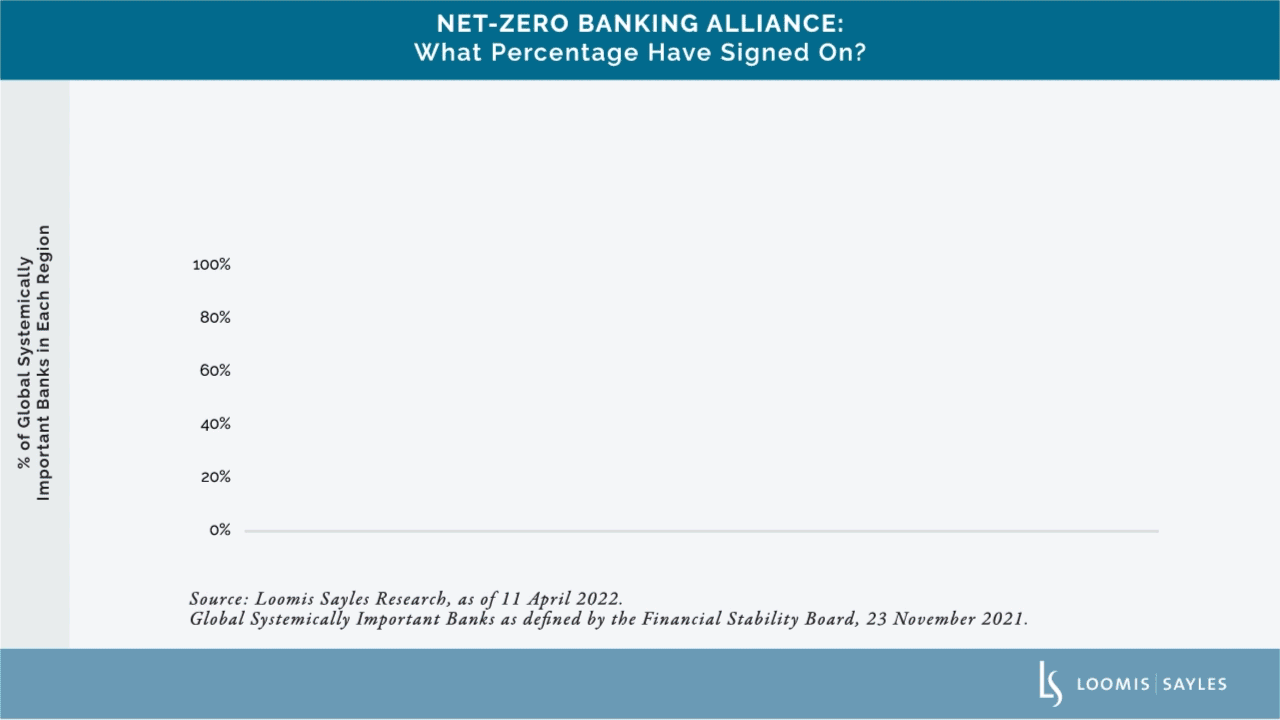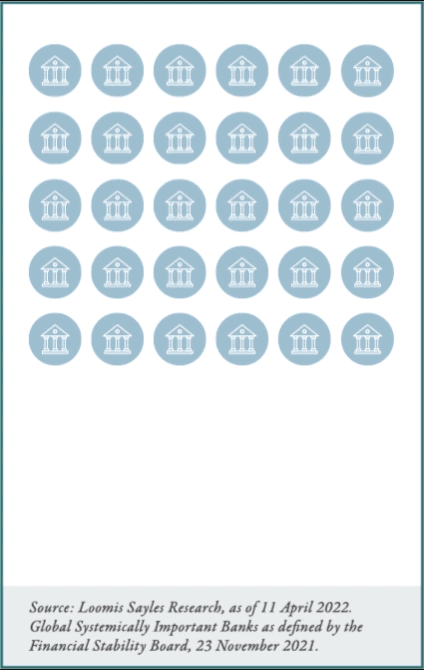Global GDP Themes and Forecasts
The disinflation trend appears intact in the US and in the euro area. While economic growth in these regions could ease, we believe solid...
The world’s leading banks have made considerable progress on voluntarily disclosing the risks they face from climate change since 2017, when the Task Force on Climate-Related Disclosures (TCFD) published recommendations for how companies should manage the process. Recently, there have been encouraging regulatory developments in the US and in Europe. But the progress also highlights how far the banks still have to go to achieve what should be the gold standard—standardized mandatory climate disclosures, stress testing by regulators to assess the risk of losses and additional capital requirements for banks most exposed to the risks. This would help improve financial stability, encourage the transition to a low-carbon economy and give investors the information they need to make informed decisions, in our view.
In the US, the Securities and Exchange Commission in March proposed that all public companies, including banks, be required to assess and disclose the impact climate change could have on their businesses. Simply put, climate risk comes in two forms: physical risk, such as damage from wildfires or rising sea levels, and transition risk—risk from changes in policies or shifts in demand triggered by the transition to a low-carbon economy. In those scenarios, we believe assets like oil reserves could lose much of their value.

Under the SEC proposal, listed companies would have to disclose their own greenhouse gas emissions, and in some cases, the emissions generated by their supply chains. For banks, that would mean calculating customers’ emissions that the bank has financed via lending or arranging bond offerings.
This month, the UK will become the first G-20 country to require large companies, including banks, to make climate disclosures in TCFD reports that until now have only been voluntary. The EU is expected to follow with additional mandatory climate disclosures next year. In general, European banks are ahead of their American counterparts on the path toward mandatory climate reporting.
Another agreement worth highlighting: the 2021 decision by most large global banks to join the Net-Zero Banking Alliance, which commits banks to reduce their own greenhouse gas emissions, and client emissions financed by banks, to net zero by 2050. Net-Zero Banking Alliance member banks account for more than 40% percent of all global banking assets.[i]

There are reasons to be optimistic. But there are just as many reasons to be mindful of the challenges that lie ahead. Even as the world’s largest banks sign onto the ambitious goals of the Net Zero Banking Alliance, most have not yet published plans for reducing financed emissions to sectors with the most impact by 2030. Some of the published interim targets don’t look ambitious enough to cut global emissions roughly in half by 2030, which the UN says is needed in order to keep global warming within 1.5% of pre-industrial levels.[ii] And some banks only include their own lending in their 2030 targets, and exclude the bond offerings that they arrange for the highest-emitting sectors.

Tough decisions lie ahead. Are banks willing to cut off lending for fossil fuel companies if customers take too long to make the transition to the low-carbon future? Banks are in business to make money and they are understandably reluctant to do anything that would jeopardize important relationships. One CEO of a large US bank said cutting off customers should be considered only as a last resort.[iii]
But if the path forward is hard to see, the ultimate goal is clear: we should have a mandatory system of robust and transparent climate disclosures for all large global banks, stress testing by regulators, and additional capital requirements for banks with the most climate risk. With this information, we believe banks and their regulators will be better able to see the risks they are facing, and investors—who are already pushing for better disclosure—will be able to make meaningful comparisons among banks.
Equally clear is the need for action. In its latest report released in February, a UN climate change panel warned that half the world’s population was already vulnerable to increasingly dangerous climate impacts.[iv] In a statement accompanying the report, UN Secretary General António Guterres highlighted the critical part finance can play in staving off disaster. “As climate impacts worsen—and they will—scaling up investments will be essential for survival,’’ he said.[v]
Because they sit at the centre of the global economy, banks are in a position to supply a portion of that financing. For them, the transition to a low-carbon economy can be an opportunity as well as a risk. So banks have a role to play here. We believe better disclosure will help them play it more effectively.
Julian Wellesley is a vice president of Loomis, Sayles & Company and a senior analyst for the
global equity opportunities team, covering the financial sector.
[i] From the Net-Zero Banking Alliance website; https://www.unepfi.org/net-zero-banking/members/
[ii] https://assets.bbhub.io/company/sites/63/2021/11/GFANZ-Progress-Report.pdf
[iii] https://www.bloombergquint.com/business/citigroup-says-dropping-clients-is-last-resort-in-climate-push
[iv] https://www.unep.org/resources/emissions-gap-report-2021
[v] https://mobile.twitter.com/antonioguterres/status/1500307429740847106
The information in this article is provided for general information purposes only and does not take into account the investment objectives, financial situation or needs of any person. Investors Mutual Limited (AFSL 229988) is the issuer and Responsible Entity of the Loomis Sayles Global Equity Fund (‘Fund’). Loomis Sayles & Company, L.P. is the Investment Manager. This information should not be relied upon in determining whether to invest in the Fund and is not a recommendation to buy, sell or hold any financial product, security or other instrument. In deciding whether to acquire or continue to hold an investment in the Fund, an investor should consider the Fund’s Product Disclosure Statement, available on the website www.loomissayles.com.au or by contacting us on 1300 157 862. Past performance is not a reliable indicator of future performance. Investments in the Fund are not a deposit with, or other liability of, Investors Mutual Limited and are subject to investment risk, including possible delays in repayment and loss of income and principal invested. Investors Mutual Limited does not guarantee the performance of the Fund or any particular rate of return.
Register to receive regular performance updates and regular insights from the Loomis Sayles investment teams, featured in the Natixis Investment Managers Expert Collective newsletter.
Loomis Sayles marketing in Australia is distributed by Natixis Investment Managers, a related entity. Your subscriber details are being collected on behalf of Loomis, Sayles & Company, and Investors Mutual Limited (the RE for Fund) by Natixis Investment Managers Australia. Please refer to our Privacy Policy. Natixis Investment Managers Australia Pty Limited (ABN 60 088 786 289) (AFSL No. 246830) is authorised to provide financial services to wholesale clients and to provide only general financial product advice to retail clients.